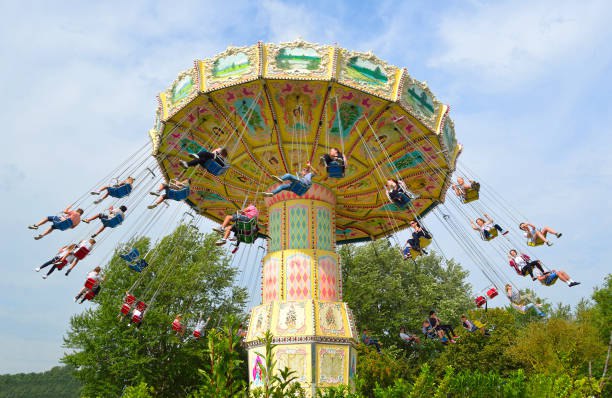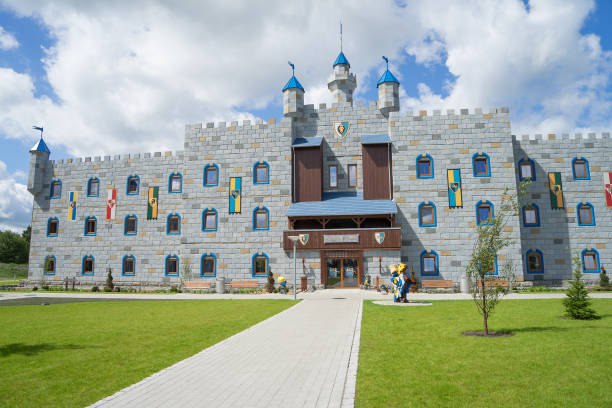Nestled in the Swiss Alps, the Swiss National Park (SNP) is a stunning example of pristine natural beauty. Established in 1914, it holds the distinction of being Switzerland's first national park and one of the oldest in Europe. Its magnificent landscapes, rich wildlife, and diverse ecosystems make it a top destination for nature lovers, hikers, and anyone eager to experience the raw splendor of the alpine wilderness.
Exploring the Swiss National Park: A Hiker’s Paradise
Spanning more than 68,000 acres, the Swiss National Park boasts an extensive network of well-marked hiking trails, catering to adventurers of all levels. Whether you're walking through ancient pine forests, scaling mountain passes, or following crystal-clear streams, there’s a trail for everyone.
Popular trails like "Fuorn Pass" and "Val Trupchun" offer breathtaking views of the valley and surrounding peaks, while the more challenging "Sesvenna" trail takes hikers through rugged terrain, with chances to spot alpine ibex, red deer, and marmots along the way.
A Haven of Biodiversity
The park is a sanctuary for wildlife, home to over 80 species of mammals, 100 bird species, and countless plant varieties. Its remote location and strict conservation policies help preserve this delicate environment, allowing nature to flourish.
Wildlife: Visitors may encounter alpine species like the alpine ibex, red deer, and chamois. The golden eagle soars above, while marmots bask in the sun along the trails.
Birdlife: With over 100 bird species recorded, birdwatchers will be thrilled to spot creatures like the lammergeier (bearded vulture), white-tailed eagle, rock ptarmigan, alpine choughs, and various finches.
Flora: The park is a botanical wonder, with lush meadows of wildflowers in spring and dense forests of fir and spruce. Alpine roses, edelweiss, and other alpine plants thrive in this pristine environment.
Photography and Scenic Vistas
Photographers will find no shortage of awe-inspiring landscapes to capture. The park offers dramatic views of snow-capped peaks, deep valleys, and shimmering lakes. As light changes throughout the day, the scenery transforms, providing endless opportunities for stunning photographs.
The "Sinestra" and "Alp Mora" viewpoints are among the most scenic in the park, offering sweeping panoramas of the surrounding Alps perfect for capturing the untouched beauty of the Swiss Alps.
Sustainability and Conservation: A Model for Eco-Tourism
The Swiss National Park exemplifies sustainable tourism. Visitors are encouraged to follow strict conservation guidelines, such as staying on designated paths, minimizing wildlife disturbance, and adopting a "leave no trace" approach. These efforts ensure the park remains a sanctuary for future generations.
Educational initiatives, including informative signs and guided tours, help visitors understand the importance of preserving these ecosystems. It's not just a place to visit but a destination to learn about the balance between nature and human impact.
Best Time to Visit
The park is open year-round, with each season offering something special.
- Summer (June to September): Ideal for hiking and wildlife watching, with long days, accessible trails, and vibrant wildflowers in bloom.
- Autumn (October to November): A quieter period with stunning fall foliage and the opportunity to observe red deer during their rutting season.
- Winter (December to March): A serene winter landscape with snow-covered trails. Some trails may be inaccessible due to snow, so it's important to check conditions before heading out.
- Spring (April to May): The park awakens with blooming wildflowers and returning wildlife, making it a wonderful time for birdwatching and hiking.
Other Outdoor Activities Beyond Hiking
While hiking is the main activity in the Swiss National Park, there are many other ways to enjoy the park’s natural beauty.
Mountain Biking: For cycling enthusiasts, the Zernez region offers exciting mountain biking trails that wind through valleys and alpine meadows. Although mountain biking isn't allowed within the park's core areas, there are plenty of bike-friendly routes nearby with incredible vistas.
Photography and Wildlife Tours: Many visitors opt for guided wildlife tours or photography excursions to get the best views of the park's wildlife, including rare species like brown bears or elusive lynx.
Cross-Country Skiing and Snowshoeing: During winter, the park transforms into a snowy wonderland, offering cross-country skiing and snowshoeing opportunities. Popular trails for these activities include Val Trupchun and Alp Languard, providing a quiet, immersive winter experience.
Nearby Attractions and Day Trips
While the Swiss National Park is a top destination on its own, there are several other attractions nearby worth exploring.
St. Moritz: Just a short drive from Zernez, St. Moritz is a world-renowned luxury ski resort, offering both winter sports and summer activities like hiking, biking, and boat rides on Lake St. Moritz. The town also boasts high-end boutiques and Michelin-starred restaurants.
Bernina Express: This UNESCO World Heritage-listed train journey offers one of the most scenic rides in the world, passing glaciers, alpine lakes, and picturesque villages. The train route connects Switzerland to Italy, providing a unique way to experience the region’s diverse landscapes.
Lago di Como (Lake Como): Located about two hours south of the Swiss National Park, Lake Como offers a change of scenery with its blend of Swiss and Italian cultures. With charming lakeside villages, stunning villas, and beautiful landscapes, it's an excellent destination for a relaxing day trip.
Discover more about the Swiss National Park by heading over to skyroutetravel.com

 India
India
 Sri Lanka
Sri Lanka




0 comments for this post